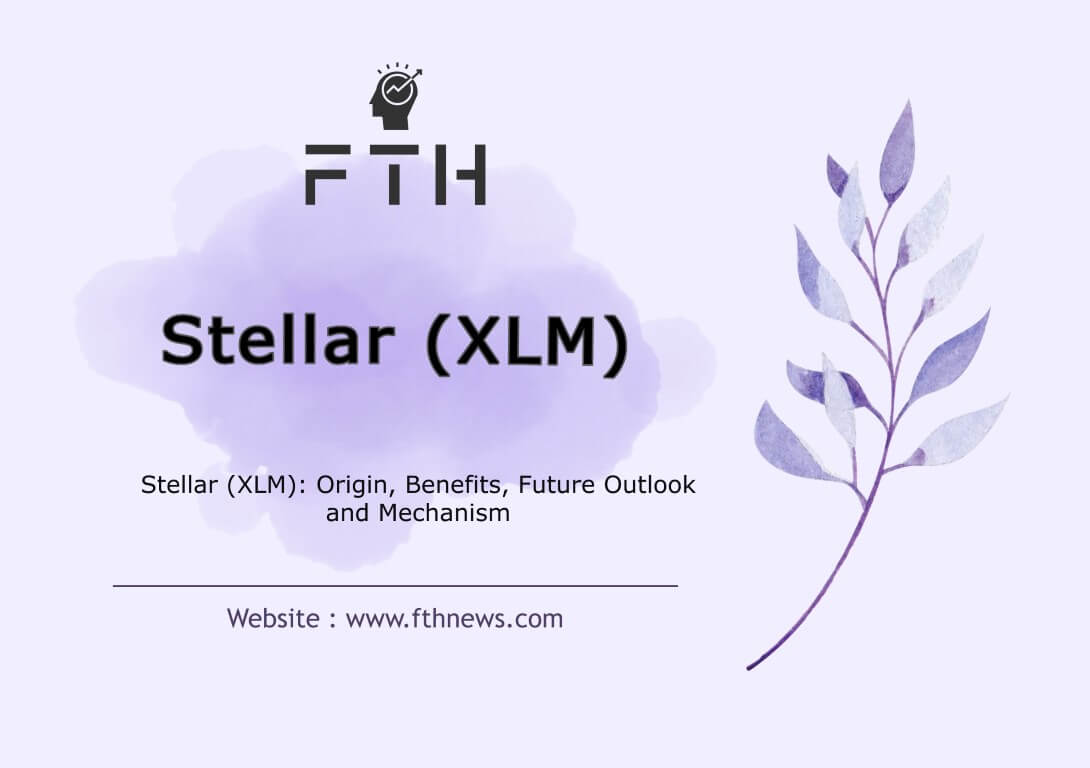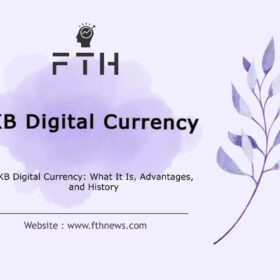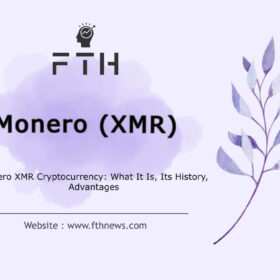
Stellar (XLM) Cryptocurrency:What It Is, History, Advantages, Future, and How It Works
Stellar (XLM) is more than just lines of code on a blockchain. It’s a revolutionary force with a rich history and a promising future. Join us as we unravel the story behind Stellar, from its inception to the present day, exploring the minds and motivations that breathed life into this remarkable cryptocurrency.
Whar is Stellar Digital Currency (XLM)?
Stellar, often denoted as XLM, stands out in the realm of digital currencies as a decentralized peer-to-peer network, akin to the pioneering Bitcoin. Employing blockchain technology like its counterparts, XLM distinguishes itself by its decentralized structure, eliminating the need for a central decision-making body. All transaction details within the Stellar network are meticulously recorded on its blockchain, accessible to anyone interested in scrutinizing the transparent ledger.
Unlike traditional banking systems, XLM disperses information among interconnected nodes or servers, forsaking the reliance on a centralized source. The decision-making processes and approvals within this network are orchestrated through the Stellar Consensus Protocol, ensuring a consensus is reached within a remarkable time frame of 3 to 5 seconds. A notable departure from Bitcoin’s Proof of Work system, Stellar’s transactions operate through the Stellar Consensus Protocol (SCP). In this system, trusted nodes, referred to as confirmation nodes or servers, along with the Stellar Core software, are entrusted with the responsibility of validating transactions.
A Brief History of Stellar Digital Currency (XLM): Jed McCaleb
At the heart of Stellar’s inception is Mr. Jed McCaleb, who previously played a pivotal role in the creation of Ripple. Drawing parallels between the foundational structures of XLM and Ripple is not coincidental; it traces back to McCaleb’s roots. Following a disagreement with the developers of Ripple, McCaleb departed, forming his team to embark on the creation of a new digital currency—Stellar.
In 2014, McCaleb’s departure from Ripple marked the genesis of XLM. The initial iteration of XLM, introduced in 2015, bore a resemblance to Ripple due to McCaleb’s involvement in both projects. However, the landscape changed significantly towards the end of 2015 with the introduction of a new algorithm and a comprehensive rewrite of Stellar’s codes, differentiating it from its predecessor.
The Purpose Behind Stellar’s Creation
While Ripple sought to facilitate financial exchanges between banks and financial institutions, Stellar, after its divergence from Ripple, set a more ambitious goal. Mr. McCaleb envisioned Stellar as a catalyst for providing affordable and swift financial services to users globally. The primary objective was to establish a secure and expeditious environment for micro-financial exchanges.
Stellar’s decentralized blockchain, boasting the capability to process thousands of transactions within the brief window of 3 to 5 seconds, emerged as the hallmark feature. This efficiency not only fulfilled the initial purpose behind its creation but also catapulted Stellar into popularity within the digital currency landscape.
Stellar Blockchain Network:
Stellar, at its core, is a purpose-built blockchain platform meticulously crafted to streamline cross-border financial and banking transactions. Addressing challenges in areas such as remittances, mobile payments, and micropayments, the Stellar Network sets out with a grand mission—to deliver affordable financial services with unprecedented speed.
Launched in 2014 as an offshoot of the Ripple protocol by visionaries Jed McCaleb and Joyce Kim, the Stellar network has evolved significantly to address distinct challenges in the financial landscape. Originally named “Stellar,” the cryptocurrency within this network underwent a nomenclature shift to “lumens” (XLM) to eliminate any potential confusion with the XLM network itself.
Key features that define the Stellar blockchain include:
- Open and Decentralized Database: XLM boasts a transparent and decentralized database, ensuring that transaction information is accessible to all participants within the network.
- Swift Transaction Confirmation: With a remarkable transaction confirmation time ranging from 3 to 5 seconds, Stellar outpaces many traditional systems, offering a swift and efficient experience for users.
- High Transaction Throughput: Stellar showcases an impressive capability to handle thousands of transactions per second, providing scalability that is crucial in the fast-paced world of digital finance.
- Stellar Consensus Protocol (SCP): A fundamental building block of the Stellar network, SCP is the mechanism through which consensus is achieved. This protocol not only ensures agreement among nodes but also contributes to the network’s resilience and security.
Meet the Lumen: Stellar Native Token (XLM)
Central to the Stellar ecosystem is its native token, aptly named “Lumen,” denoted by the abbreviation “XLM.” As the lifeblood of the XLM network, Lumens play a pivotal role in facilitating transactions and maintaining the integrity of the entire blockchain. The use of Lumens as the native currency adds an extra layer of efficiency and coherence to the Stellar ecosystem.
In essence, XLM has emerged as a trailblazer in the blockchain landscape, offering a robust solution to the challenges posed by cross-border financial transactions. Its commitment to openness, speed, and decentralization, coupled with the innovative XLM Consensus Protocol, positions it as a formidable force in the ever-evolving world of digital finance.
Popularity of Stellar: A Beacon for Financial Inclusion
Stellar’s meteoric rise in popularity can be attributed to its unique blend of traditional banking services and groundbreaking differences that set it apart in the world of cryptocurrencies. Operating within a decentralized network, XLM executes transactions with a significantly lower cost and higher processing speed compared to conventional banks, completing payments within a remarkable timeframe of 3-5 seconds.
The key factors driving Stellar’s popularity include:
1. Cost Efficiency and Speed:
- Stellar processes transactions at a fraction of the cost incurred by traditional banks, making it an attractive option for users seeking economic efficiency.
- The rapid processing speed, completing transactions within 3-5 seconds, stands in stark contrast to the often time-consuming processes within traditional banking systems.
2. Simplicity in Currency Exchange:
- Stellar simplifies the exchange of currencies within its system, making it a seamless process for users. The simplicity stems from the decentralized nature of the network, eliminating the need for intermediaries and reducing associated costs.
3. Minimal Network Costs:
- The Stellar network operates with negligible network costs, providing users with a cost-effective alternative to traditional financial systems.
Stellar’s Mission:
Stellar’s overarching mission goes beyond financial transactions. It aspires to fight poverty and maximize individual potential by delivering low-cost financial services to a global audience. This altruistic goal aligns with Stellar’s ethos of inclusivity and accessibility.
How Stellar Operates
Stellar’s functionality extends beyond being a cryptocurrency; it operates as a comprehensive platform that facilitates communication between organizations, including banks and financial systems, referred to as anchors within the network. These trusted entities act as bridges, ensuring smooth communication within the Stellar network.
Real-World Example:
- Suppose you’re in America, and your friend in France requests a payment of 100 euros. Utilizing the Stellar network, you can send the equivalent in dollars, which will automatically convert to euros in the French bank and reach your friend seamlessly.
Services Offered by Stellar Digital Currency:
Stellar has positioned itself as a promising and attractive cryptocurrency for investment, offering a myriad of services that distinguish it in the digital currency landscape:
1. Independence and Decentralization:
- Stellar is an open-source and decentralized cryptocurrency, entirely independent of government control. This characteristic ensures autonomy and resilience.
2. Bridging Digital and Traditional Payment Systems:
- Acting as a bridge between digital currencies and traditional payment systems, Stellar facilitates easy and rapid daily payments, contributing to the seamless integration of digital currency into everyday transactions.
3. Stellar Lumens (XLM):
- Stellar’s native digital currency, Lumen (XLM), plays a pivotal role in daily transactions. With approximately 22.5 billion coins in circulation and a maximum supply of 50 billion, XLM serves as a valuable asset within the Stellar ecosystem.
Token Burning Controversy:
- Stellar’s decision to burn almost half of its coins in November 2019 stirred controversy within the crypto community. While this move initially boosted XLM’s market price, it raised questions about the principles of decentralization and manipulation within decentralized systems.
In essence, Stellar’s popularity is anchored in its commitment to cost-effectiveness, speed, and a mission to empower individuals globally by providing accessible and inclusive financial services.
Advantages of Using Stellar Digital Currency:
1. Seamless Fiat-Crypto Exchanges:
- Similar to Ripple, Stellar facilitates exchanges between traditional fiat currencies (like dollars and euros) and various cryptocurrencies, providing users with a versatile platform for managing their assets.
2. High Transaction Throughput:
- Stellar stands out by offering the capability to process up to 1000 transactions simultaneously. This high throughput ensures efficient and timely transactions, making it suitable for a wide range of users, from individuals to institutions.
3. Decentralized Internet Network:
- As a decentralized internet network, Stellar serves as a bridge for both traditional banks and individuals to transfer fiat currencies securely and swiftly across the globe. This capability opens up possibilities for quick and secure international money transfers.
4. Online Exchange Functionality:
- Stellar functions as an online exchange, allowing users on its platform to convert their digital currency to any other supported currency. This versatility adds to the convenience and accessibility of Stellar for users with diverse financial needs.
5. Cost-Effective Transactions:
- Stellar cryptocurrency is known for its cost-effectiveness. It boasts very low fees, making it an attractive option for users looking to minimize transaction costs, whether they are making small micropayments or larger financial transactions.
6. User-Friendly Interface and Protocol:
- Stellar’s internal protocol makes it easy for users to engage with the digital currency. The platform is designed for user convenience, allowing individuals to conduct transactions seamlessly without the need for intermediary exchanges.
Disadvantages of Stellar Cryptocurrency:
1. Intense Market Competition:
- Stellar faces stiff competition in the cryptocurrency landscape due to its unique features and goals. To maintain its position, Stellar must continually expand its services and features to stay ahead in a rapidly evolving market.
2. Non-Minable Nature:
- Unlike some other cryptocurrencies, Lumens (XLM) is non-minable. This means that the only way to acquire XLM is through purchasing from exchanges that support it. While this can provide a straightforward way to obtain the cryptocurrency, it may limit the avenues for community participation through mining activities.
In summary, while XLM offers numerous advantages such as seamless exchanges, high throughput, and cost-effective transactions, it faces challenges such as intense market competition and the non-minable nature of its cryptocurrency. Continuous innovation and adaptation will be crucial for XLM to thrive in the dynamic landscape of digital currencies.
What is the difference between Stellar and Ripple?
While Stellar and Ripple share a common origin and were both founded by Jed McCaleb, they have evolved to serve distinct purposes and employ different protocols. Here are the key differences between these two prominent cryptocurrencies:
1. Mission and Purpose:
- Stellar (XLM): Stellar Lumens is designed with a mission to empower individuals by facilitating daily purchases and payments. Stellar’s focus extends to providing accessible financial services to people globally, with real-world projects such as initiatives in the islands of the South Pacific aimed at improving daily transactions for local populations.
- Ripple (XRP): Ripple, on the other hand, has a broader aim of revolutionizing the financial industry. Ripple’s digital currency, XRP, is strategically aligned to assist and collaborate with major financial institutions, including giants like Santander, Bank of America, and HSBC. Ripple seeks to optimize and streamline cross-border transactions for these institutions.
2. Protocol Variance:
- Stellar (XLM): Stellar Lumens operates on the Stellar Consensus Protocol (SCP), a unique consensus mechanism tailored to its mission of enabling fast and affordable financial services. This protocol emphasizes decentralization and speed, aligning with Stellar’s goal of financial inclusivity.
- Ripple (XRP): Ripple, on the other hand, operates on the Ripple Protocol Consensus Algorithm (RPCA). While both protocols share some similarities, Ripple’s focus is on facilitating consensus among financial institutions, ensuring secure and swift transactions on a global scale.
3. Programming Languages:
- Stellar (XLM): Stellar utilizes programming languages such as C/C++, GO, and JavaScript. This choice of languages reflects Stellar’s commitment to versatility and compatibility with various development environments.
- Ripple (XRP): Ripple employs a different set of programming languages, including C/C++, Java, JavaScript, and GO. The diversity in programming languages underscores Ripple’s adaptability to the requirements of large financial institutions and diverse technological infrastructures.
In essence, while Stellar and Ripple may share a historical connection, their paths have diverged to address distinct needs within the financial ecosystem. Stellar Lumens aims to empower individuals through accessible financial services, while Ripple focuses on transforming global financial institutions through optimized cross-border transactions. The differences in their protocols and programming languages further underscore their unique approaches to achieving these goals.
Future Predictions for Stellar
Stellar, as a pioneering force in reshaping global monetary systems, is poised for a promising future, driven by strategic partnerships and innovative developments. The collaboration with major players such as Deloitte, IBM, and Stripe underscores the strength of Stellar’s vision, leading investors to anticipate long-term price growth.
Key Milestones in Stellar’s Roadmap:
1. Network Scalability and Innovation:
- At the outset of 2022, the Stellar Development Foundation revealed a multifaceted roadmap focusing on enhancing network scalability and fostering innovation. These initiatives aim to make money transfers more accessible and cost-effective on a global scale.
2. Strategic Partnerships:
- The collaboration with industry giants, including Deloitte, IBM, and Stripe, showcases Stellar’s commitment to building a robust ecosystem. These partnerships not only provide credibility but also position Stellar as a key player in the evolution of financial systems.
3. Project Jump Cannon:
- Responding to the growing demand for smart contract capabilities akin to Ethereum, Solana, and Cardano, XLM introduced Project Jump Cannon. This dedicated research and development department aims to empower XLM with smart contract functionalities, further enhancing its competitiveness in the market.
4. Automated Market Maker (AMM):
- The introduction of Stellar Network’s Automated Market Maker (AMM) is a pivotal step in advancing the project’s goals. This move positions XLM to directly compete with established platforms like Ethereum, signaling its commitment to continuous innovation.
5. Starbridge for Interoperability:
- Recognizing the challenge of blockchain isolation, XLM introduced Starbridge, a project aimed at creating a platform for seamless interaction with other blockchains. This initiative addresses a crucial limitation, opening up avenues for increased interoperability and data exchange between different blockchain networks.
Hopeful Signs for Stellar’s Future:
These developments instill hope for Stellar’s future growth, making predictions about its price trajectory more optimistic. By addressing scalability, fostering innovation, and enhancing interoperability, XLM is positioning itself as a formidable player in the evolving landscape of digital currencies.
Stellar Wallets:
The native currency of the Stellar network is called Lumen, denoted by the abbreviation XLM. To facilitate secure storage and transactions, validated wallets include:
1. Stellar Desktop Wallet (Official Wallet):
- An open-source client provided by XLM, supporting Windows, Mac, and Linux operating systems. Users can manage their Lumens securely, with private keys and wallet contents stored locally, emphasizing user control.
2. Ledger Nano:
- Renowned as one of the most secure wallets, Ledger Nano offers hardware-based security with educational programming and multi-signature capabilities. Supporting various cryptocurrencies, including Stellar Lumen, this wallet ensures an extra layer of protection for users.
As XLM continues to pioneer innovations and forge strategic alliances, the trajectory of its future appears promising. Investors and enthusiasts alike are closely watching how Stellar’s roadmap unfolds, anticipating sustained growth and influence in the realm of digital currencies.














